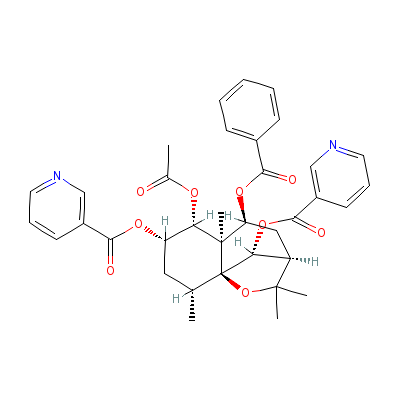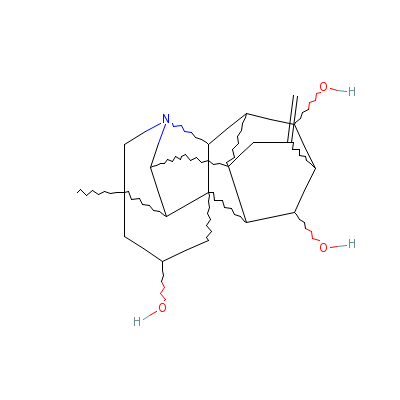Aconitum heterophyllum WALL. EX ROYLE SERINGE |
| |
|
|
Botanical Name |
: |
Aconitum heterophyllum WALL. EX ROYLE SERINGE |
English
Name |
: |
Asian monkshood, Atis root, Aconites, Indian Atees |
Synonym(s) |
: |
Aconitum cordatum; Aconitum Atees |
Family |
: |
Ranunculaceae |
| |
General Info
| Description |
 |
|
Perennial, aesthetic herb containing tuberous roots and standing 1-3 ft tall. Roots biennial, paired, tuberous, daughter tuber cylindrical to cylindrical, oblong or conic, long, thick, bearing few root fibres which are friable, bark very thin. Stem erect, simple or branched, high, glabrous below internodes short. Leaves are mainly heteromorphous, glabrous, Inflorescence a slender raceme, leafy panicle or in alpine specimens reduced to a few flowers, crispo-pubescent. Sepals blue or violet, Nectaries, glabrous. Seeds obpyramidal, long blackish brown. |
| Herb Effects |
 |
|
Hypotensive, hypertensive (aqueous root extract), anthelmintic, antipyretic, aphordisiac, astringent, carminative, antiinflammatory, antiperiodic, cholagogue, febrifuge, tonic. |
Chemistry
| Active Ingredients |
 |
|
Altisine, heterophyllisine, heterophylline, heterophyllidine, atidine, hetisine and benzoylheteratisine. |
| Chemistry
of Active Ingredients |
 |
|
|
 |
Name |
CAS# |
IUPAC Name |
Formula |
Structure |
 |
|
| Heterophylline |
Not Available |
Not Available |
C36H38N2O9 |

|
| Hetisine |
10089-23-3 |
Not Available |
C20H27NO3 |

|
|
Pharmacology
| Medicinal Use |
 |
|
Snakebite, fever, as a tonic, in abdominal pain, diarrhea, hemorrhoids,in the fevers of contagious diseases and inflammation of the intestines. |
| Contraindication |
 |
|
The whole Aconitum heterophyllum plant is highly toxic, even simple skin contact can cause numbness in people with sensitive skin. In large doses, this herb can cause constipation. Toxic overdoses will cause parasthesia, dry mouth, bradycardia, and in extreme cases, coma. Aconitum heterophyllum is a very poisonous plant and should only be used with extreme caution and under the supervision of a qualified practitioner. |
| Reference |
 |
|
 Sharma, Classical Uses of Medicinal Plants. Sharma, Classical Uses of Medicinal Plants.
Chandel et al., Biodiversity in Medicinal and Aromatic Plants in India.
Uniyal et al., Medicinal Flora of Garhwal Himalayas.
|
Dealers
Products
|
|